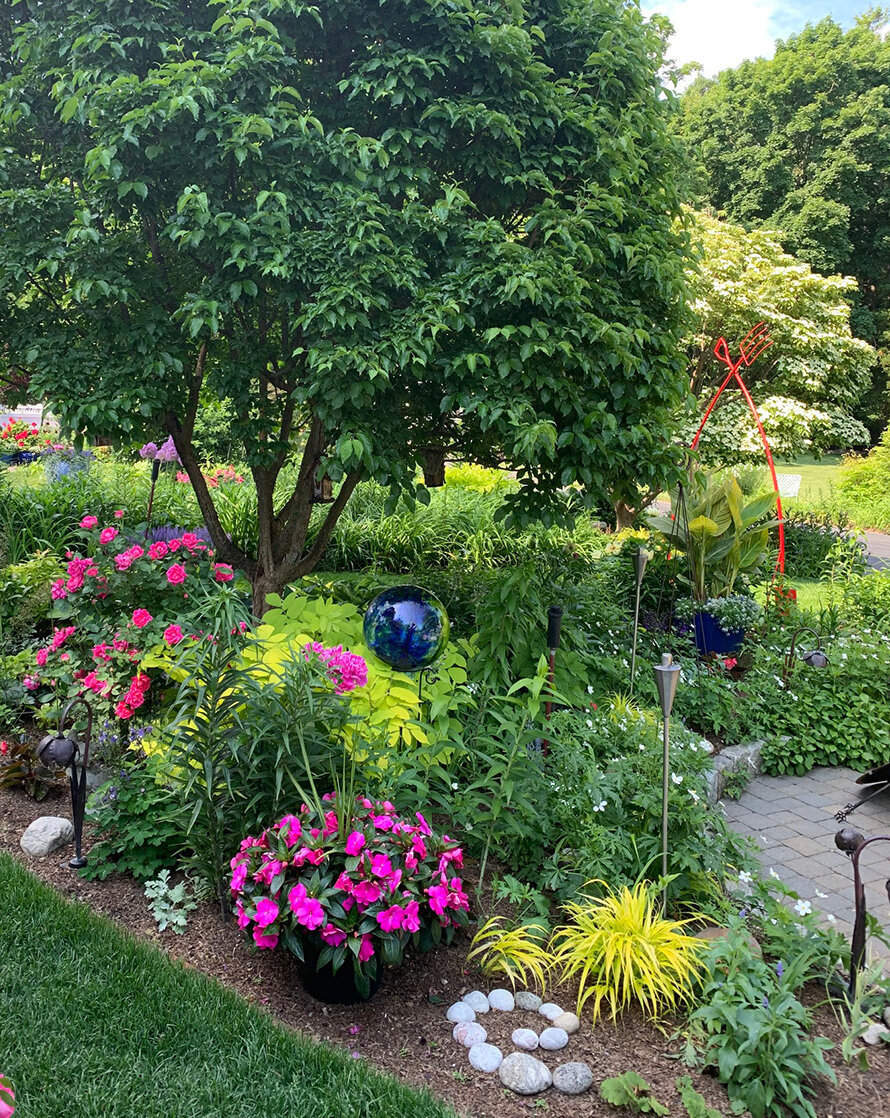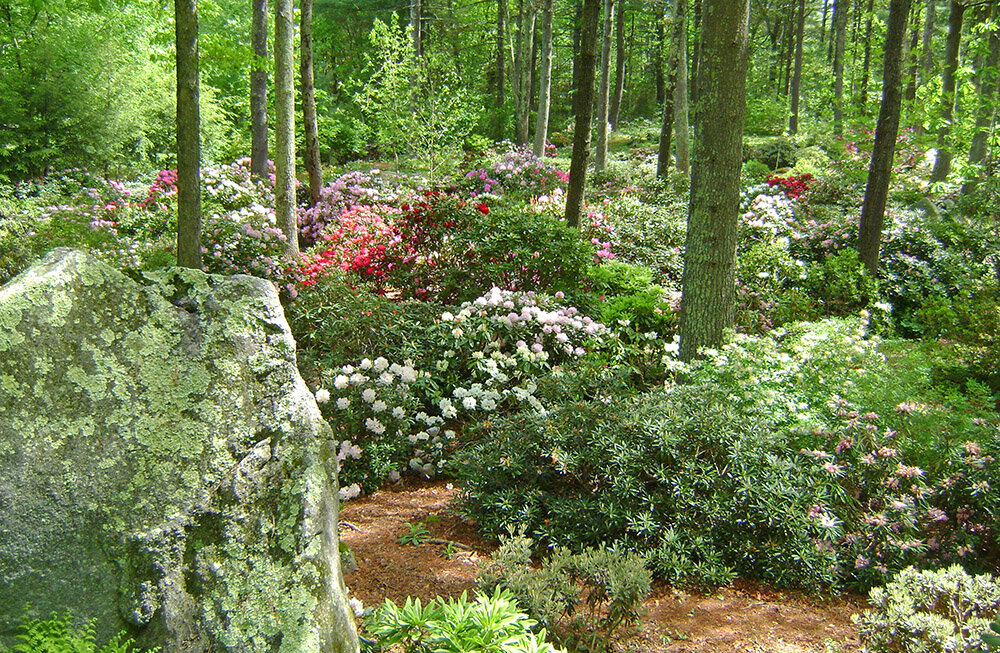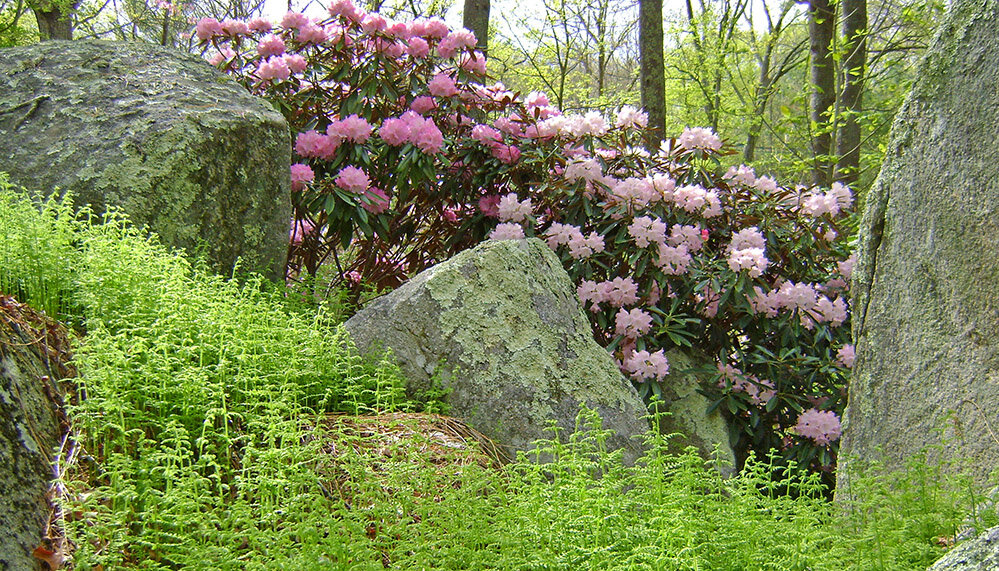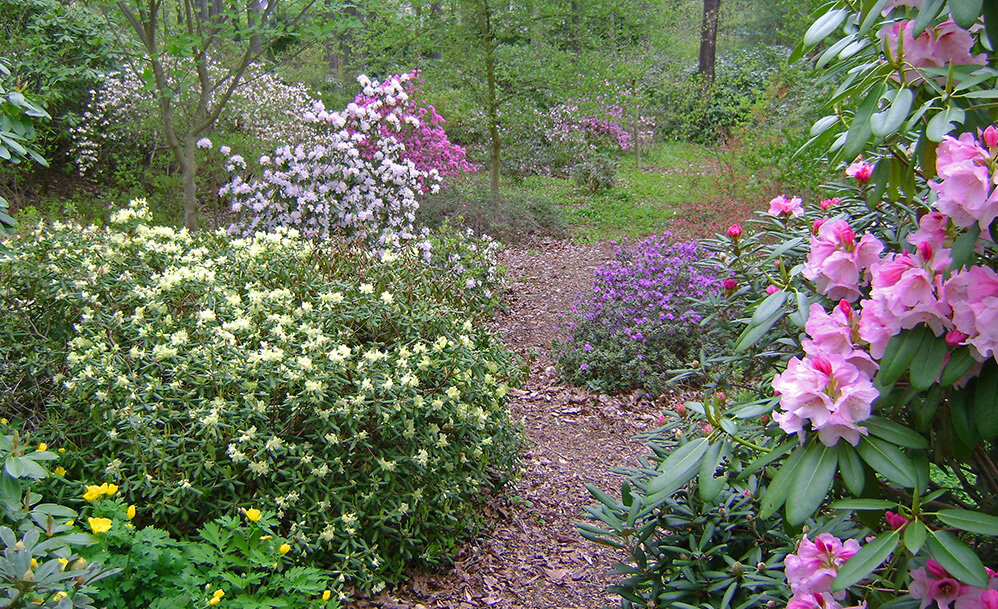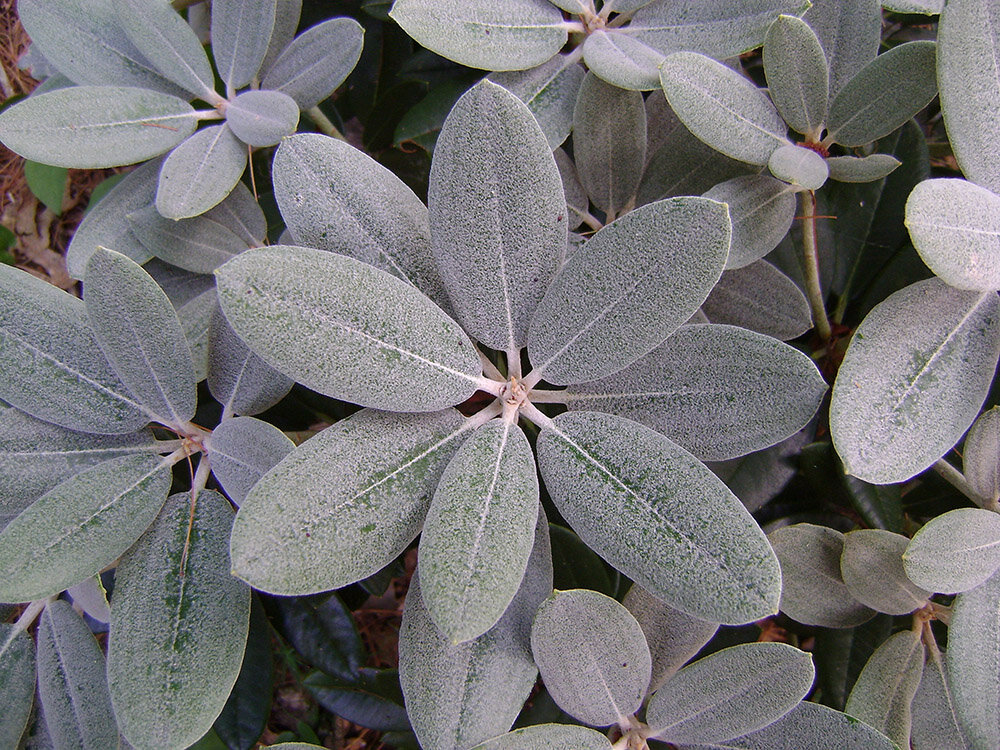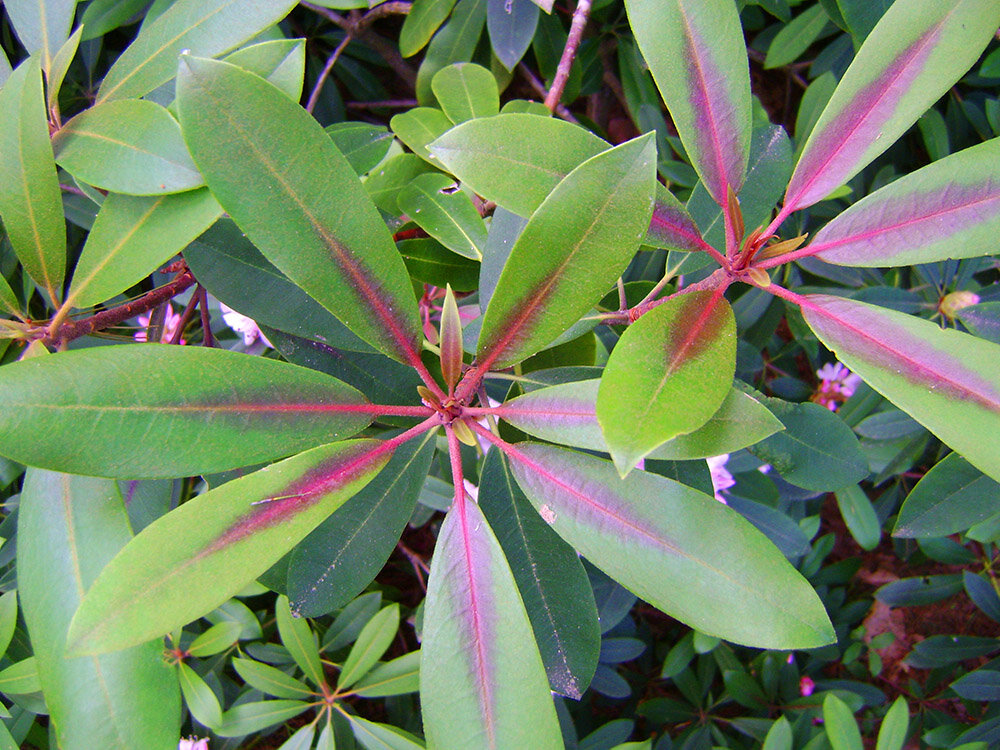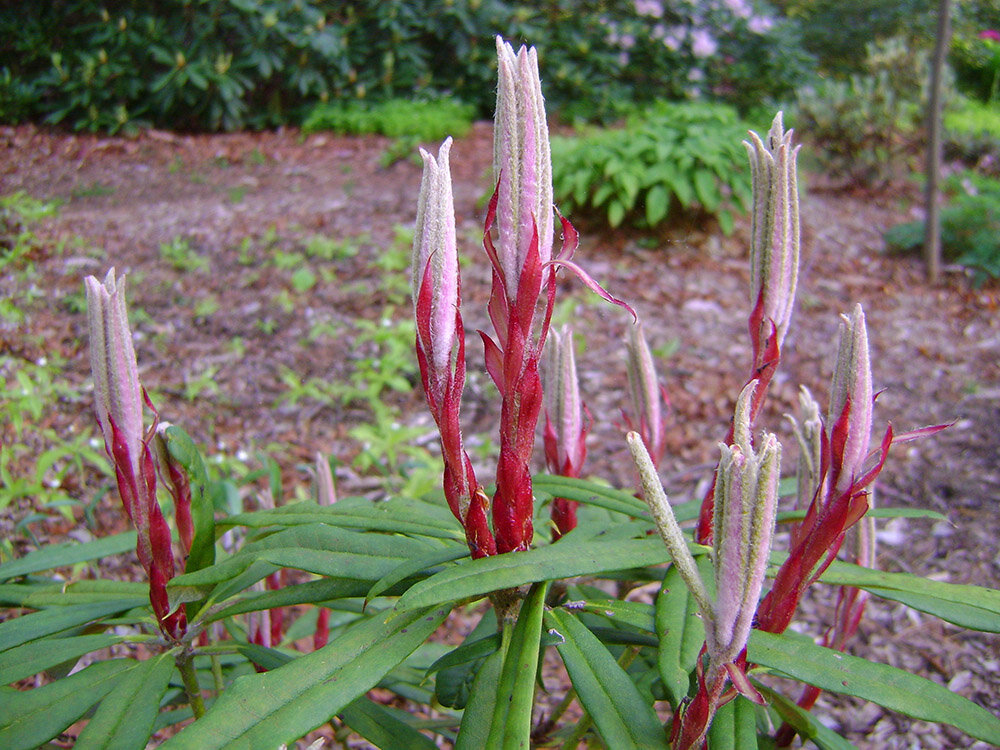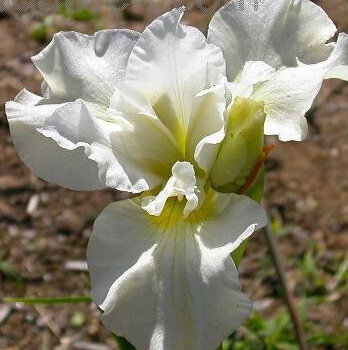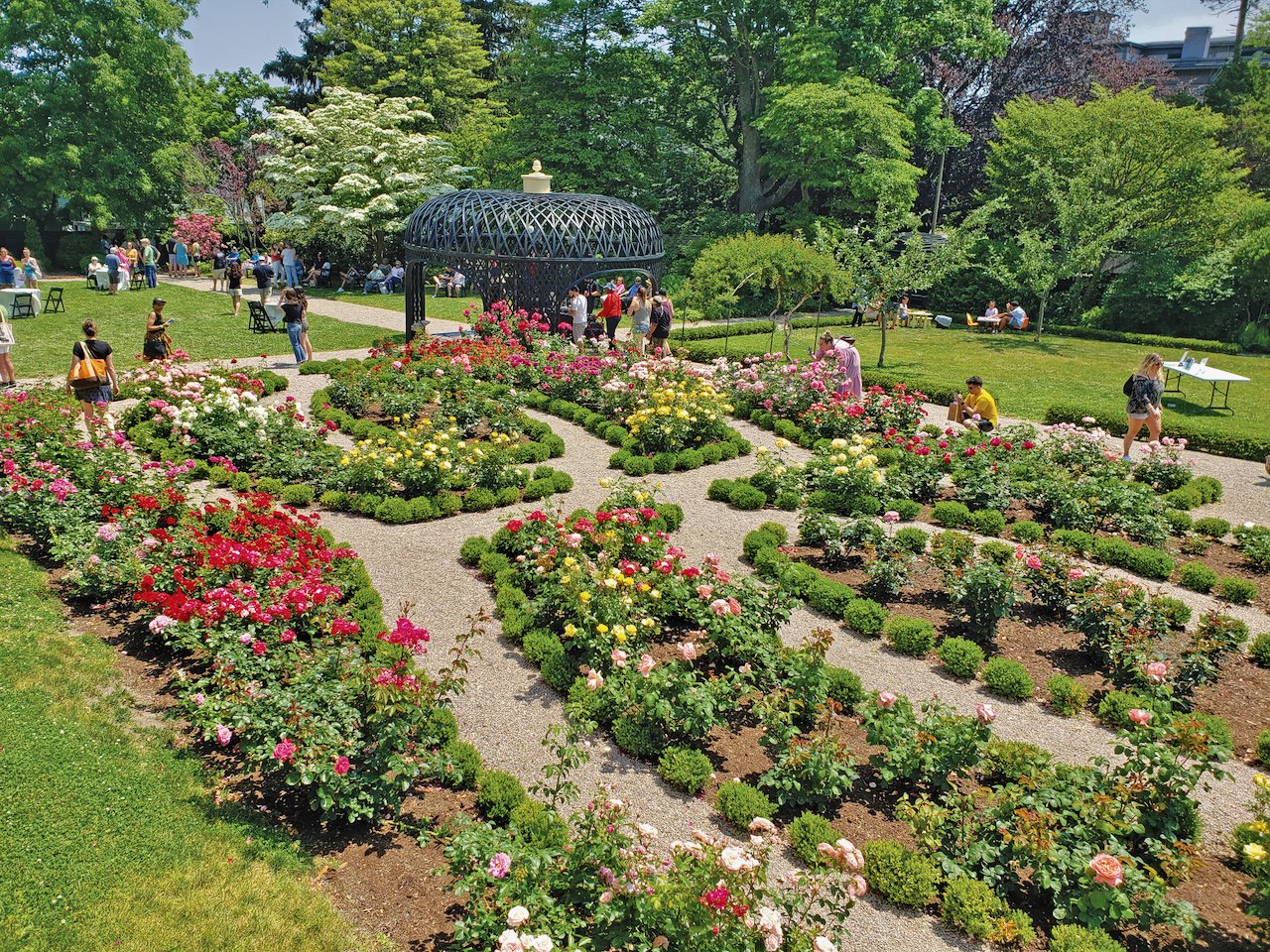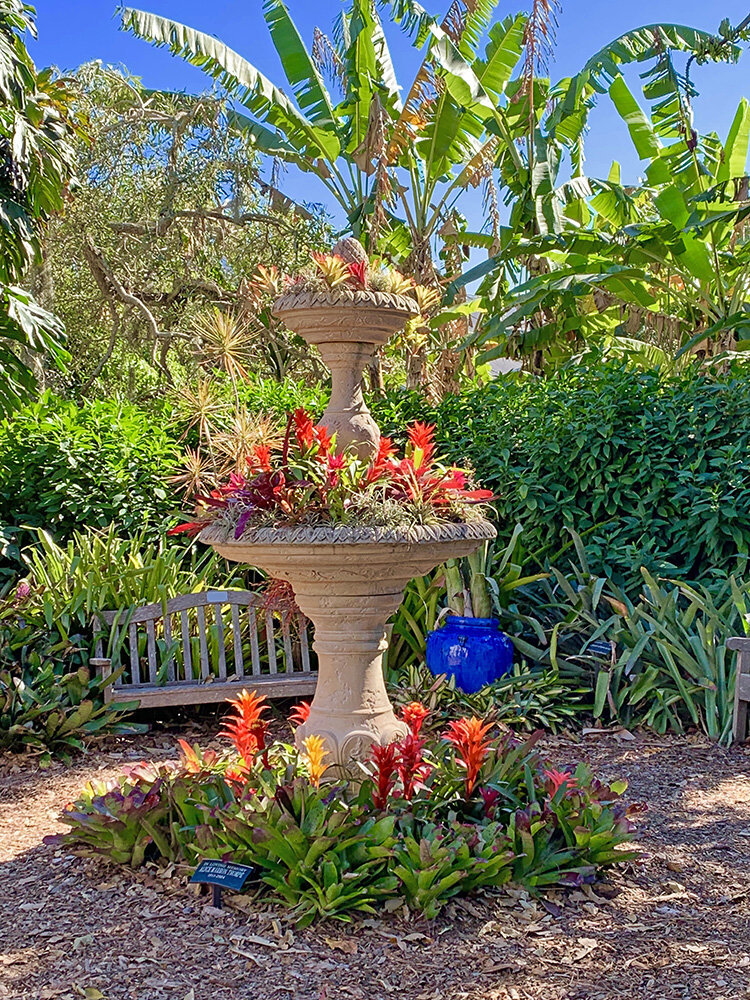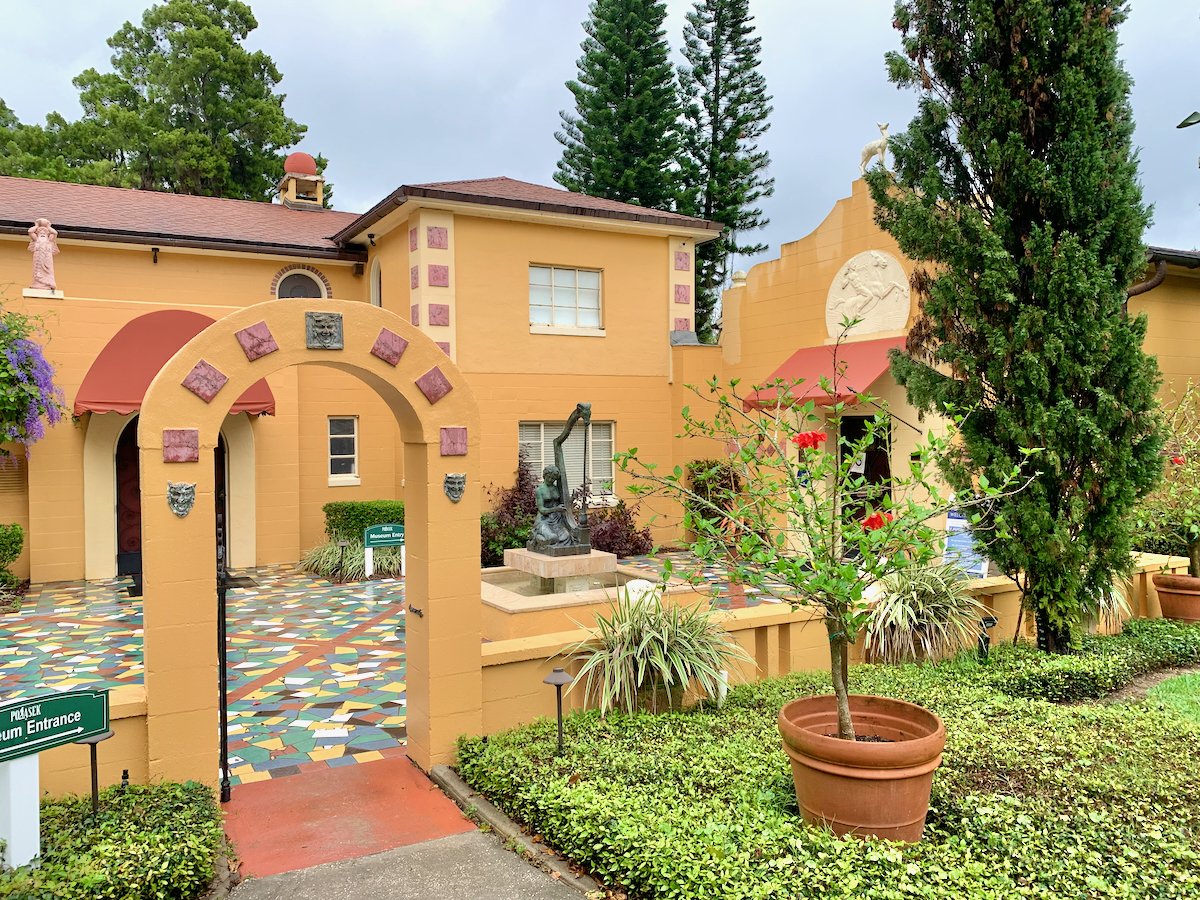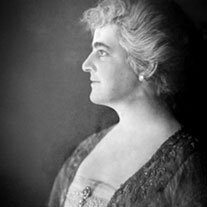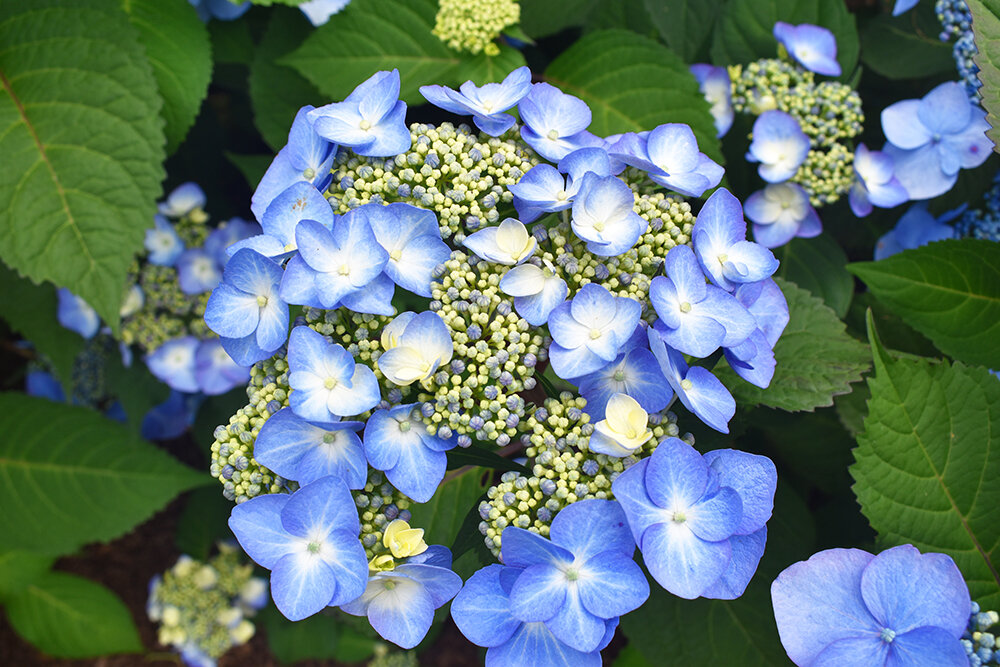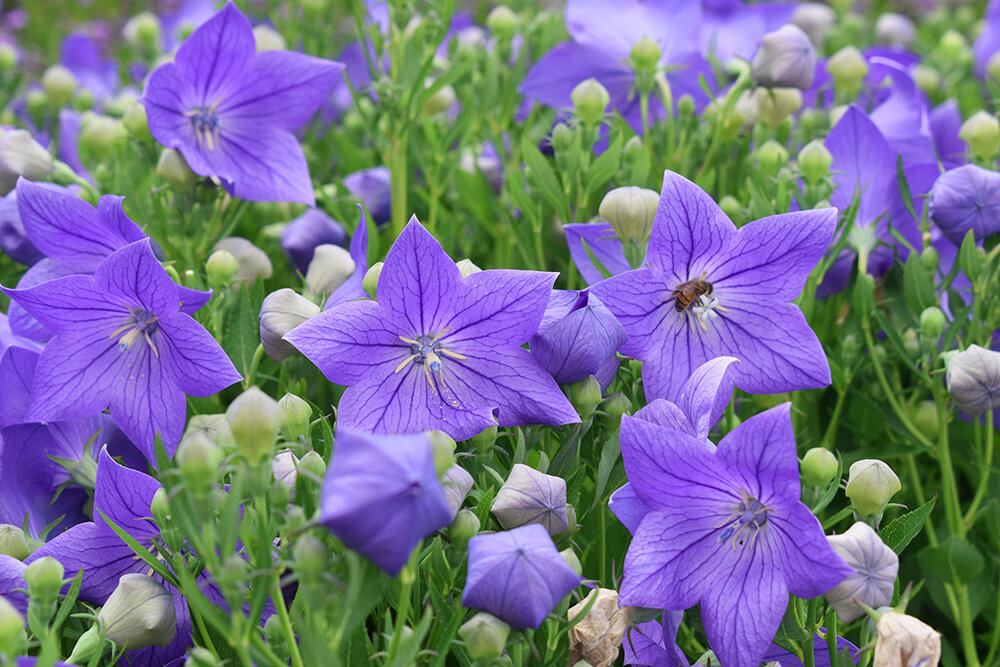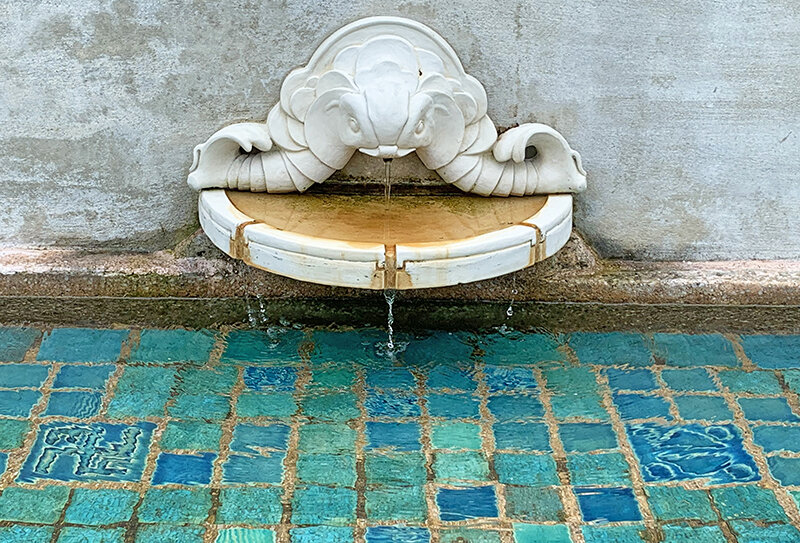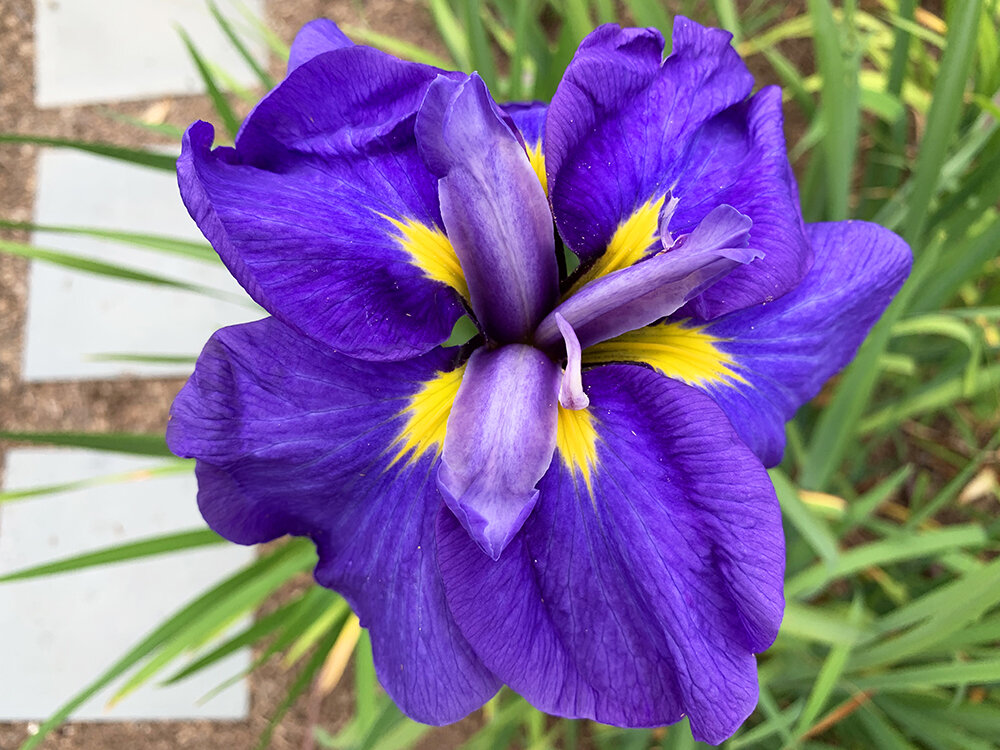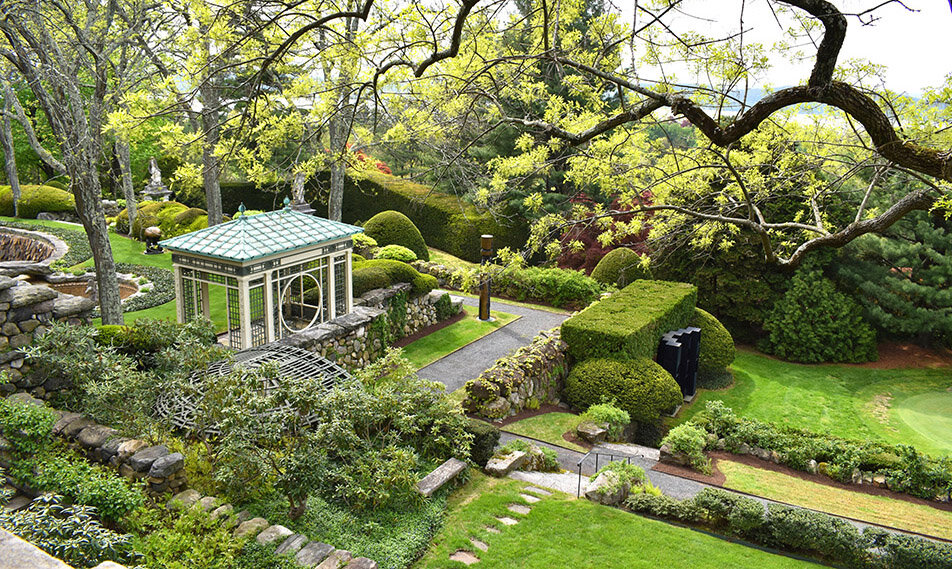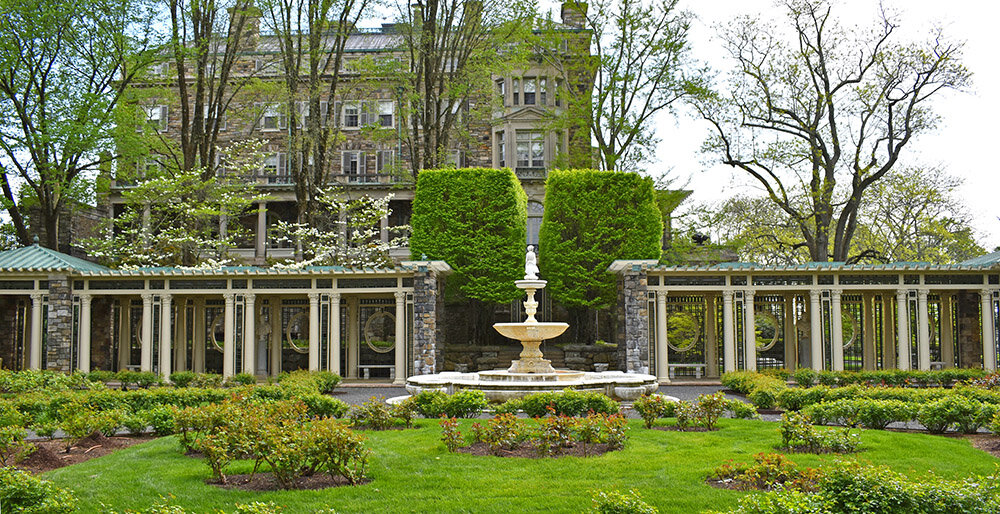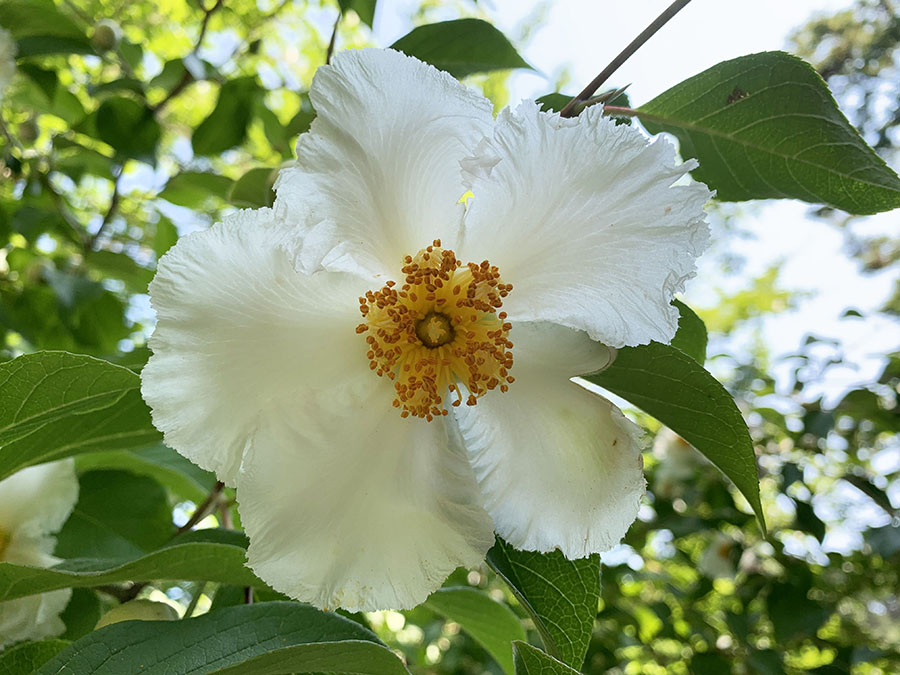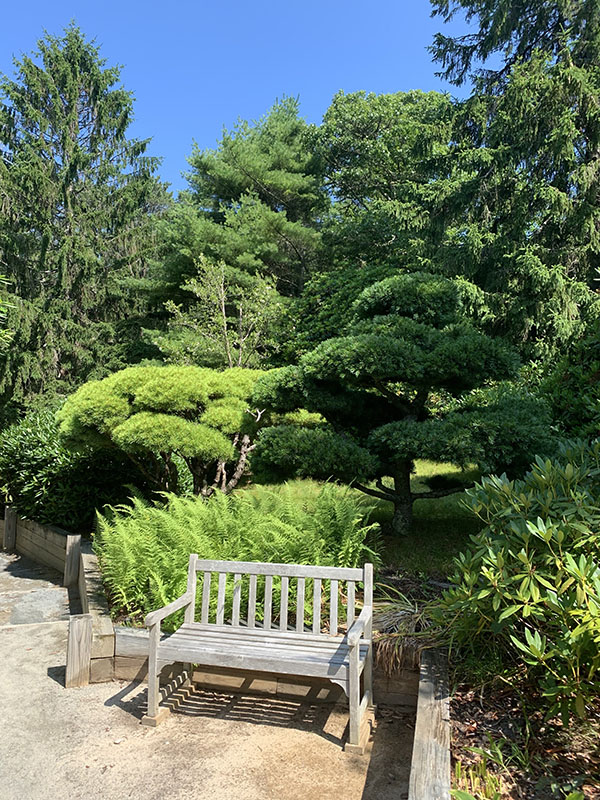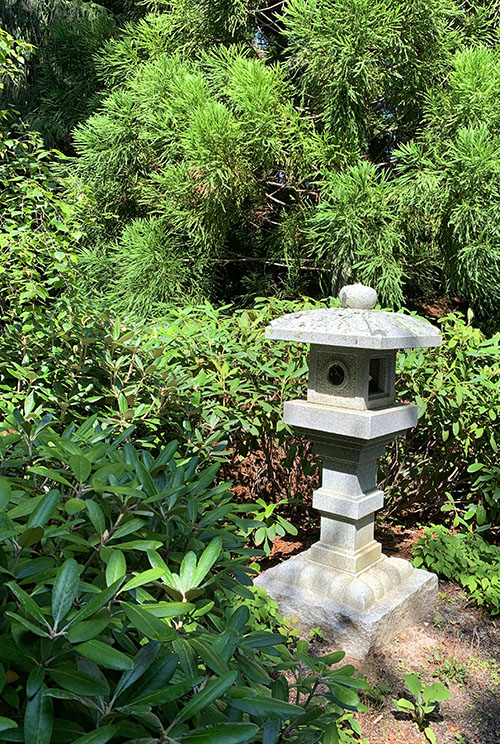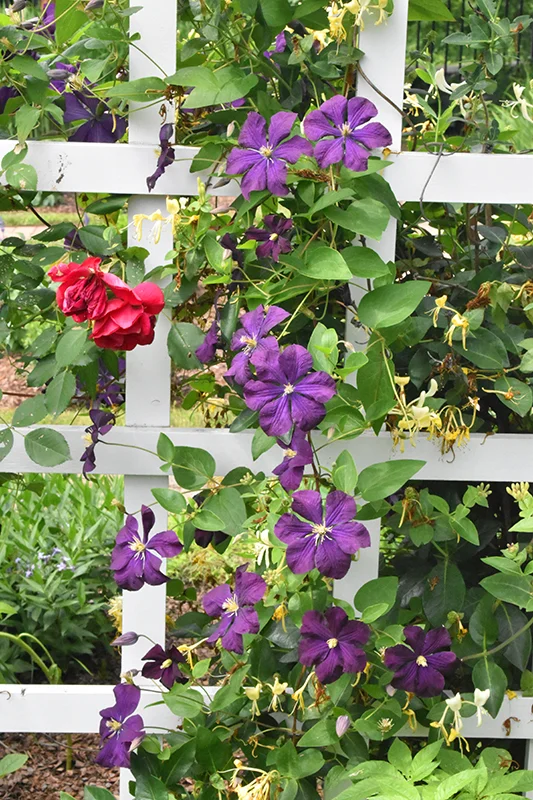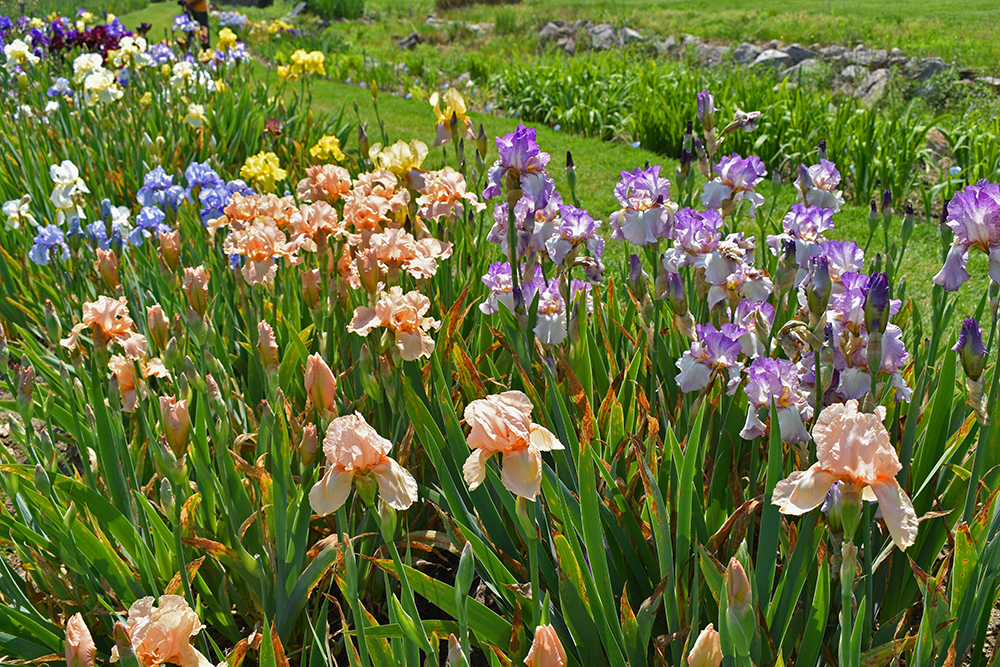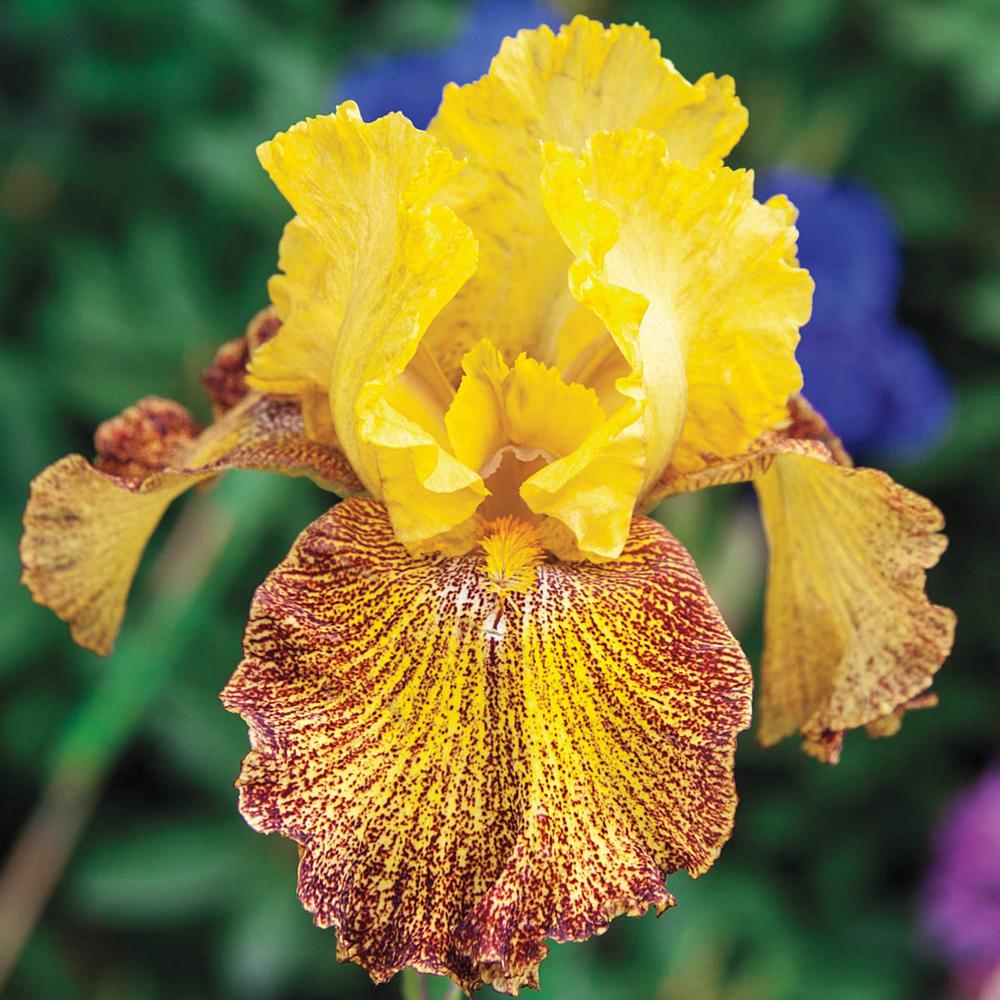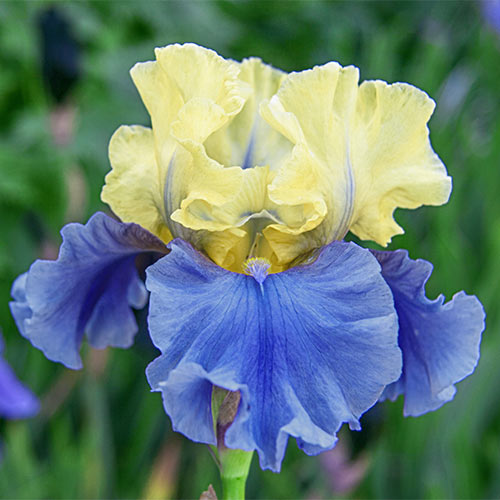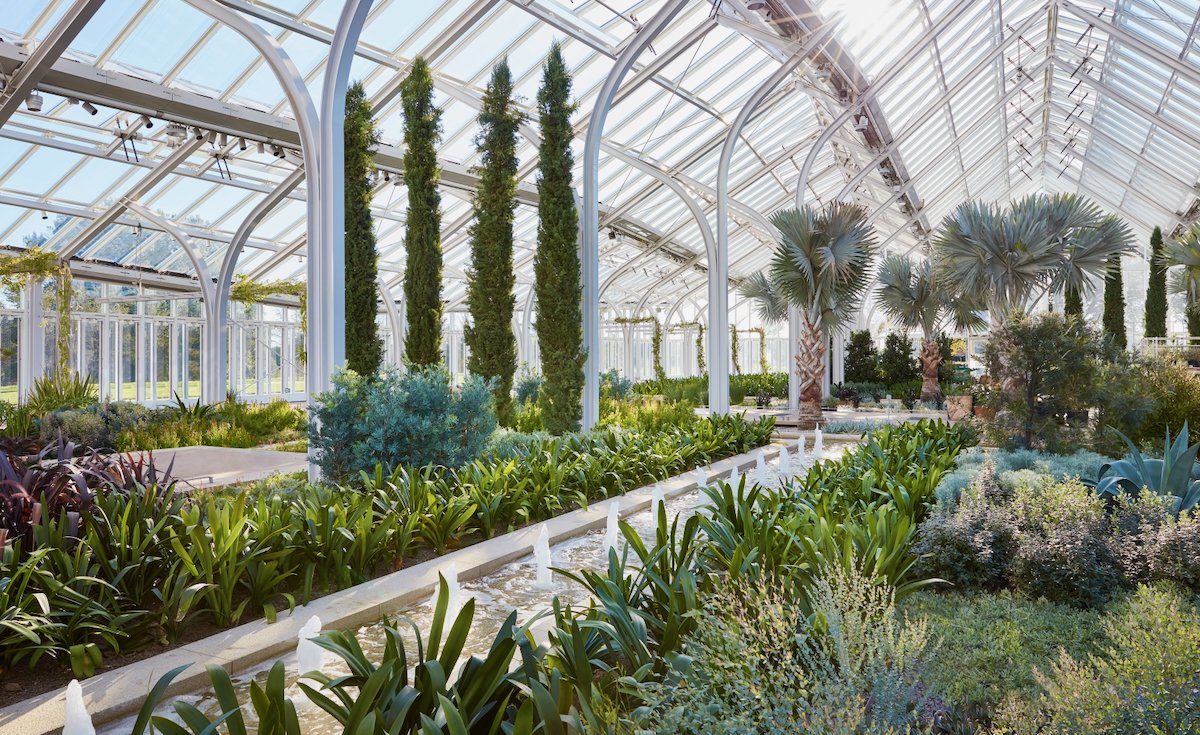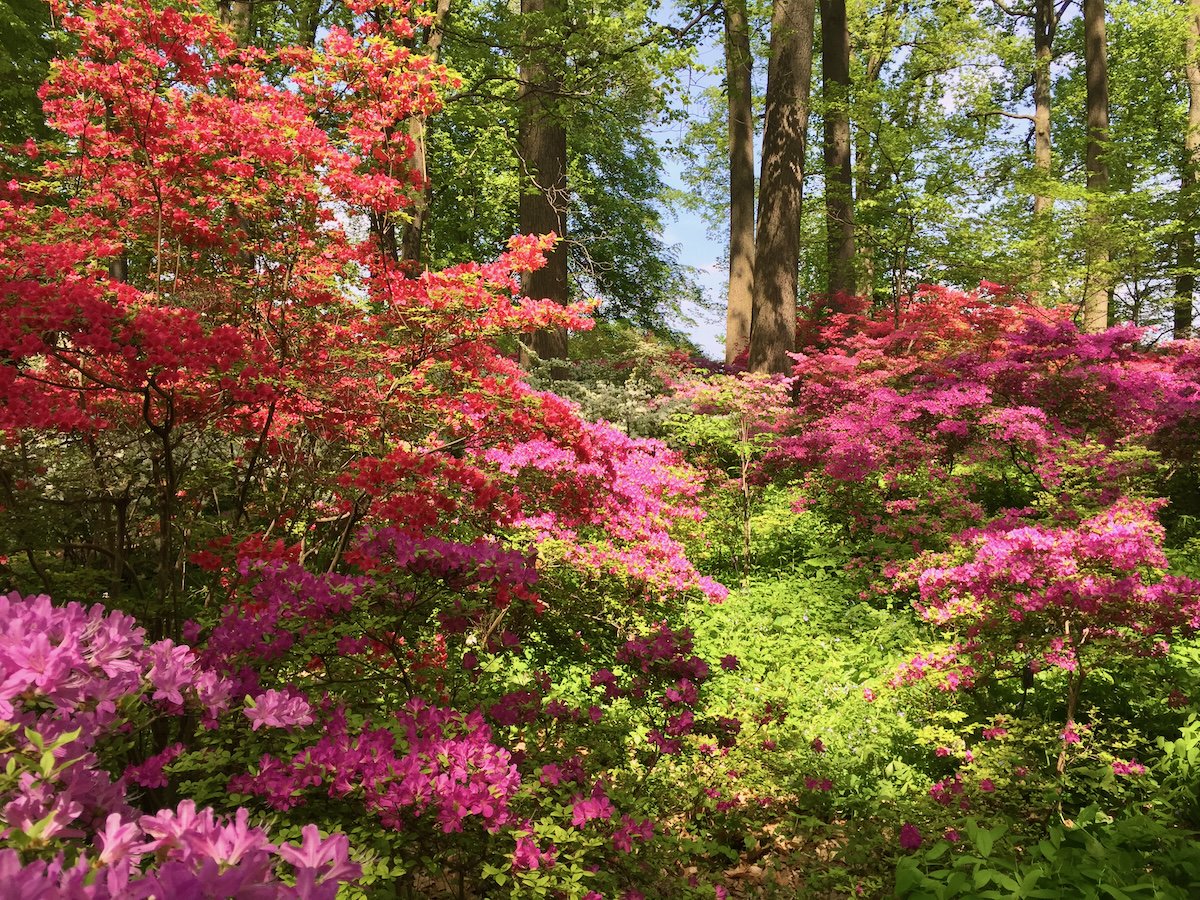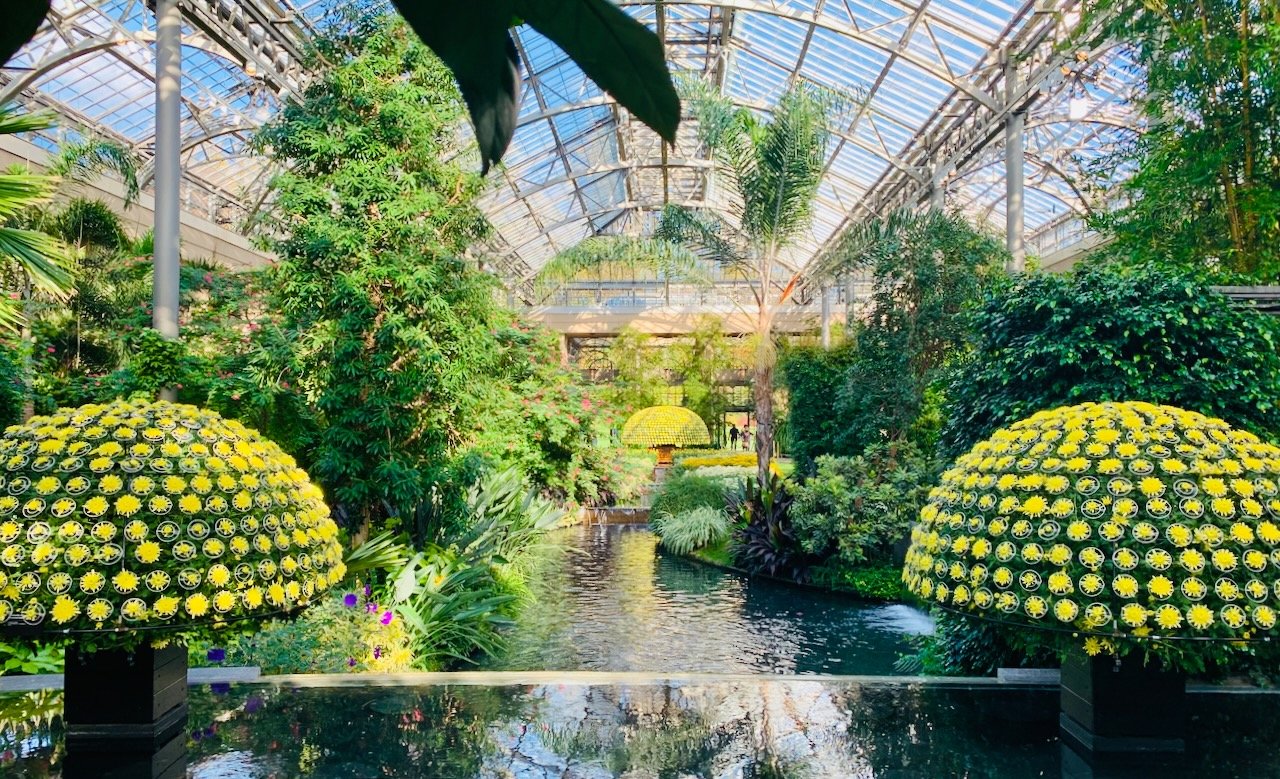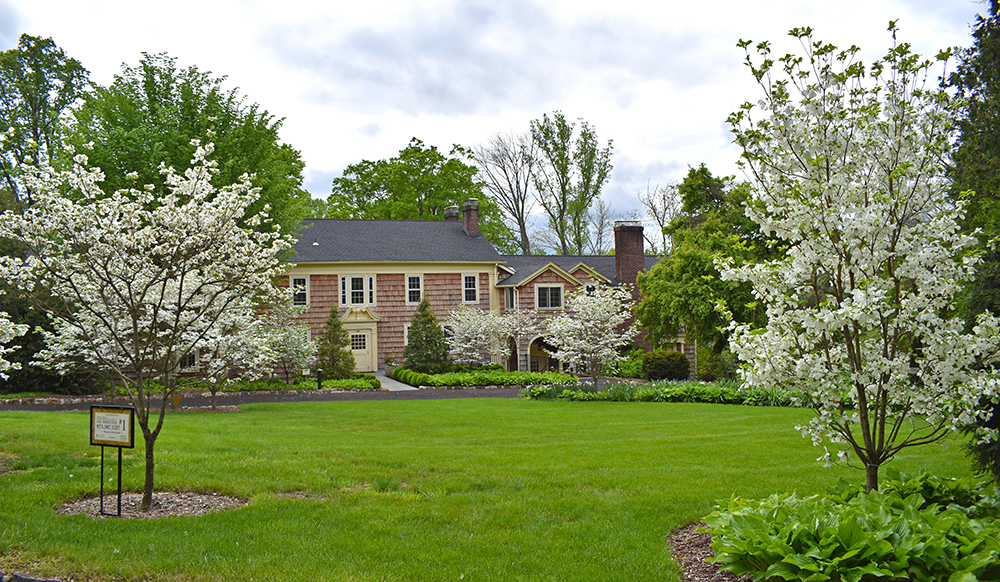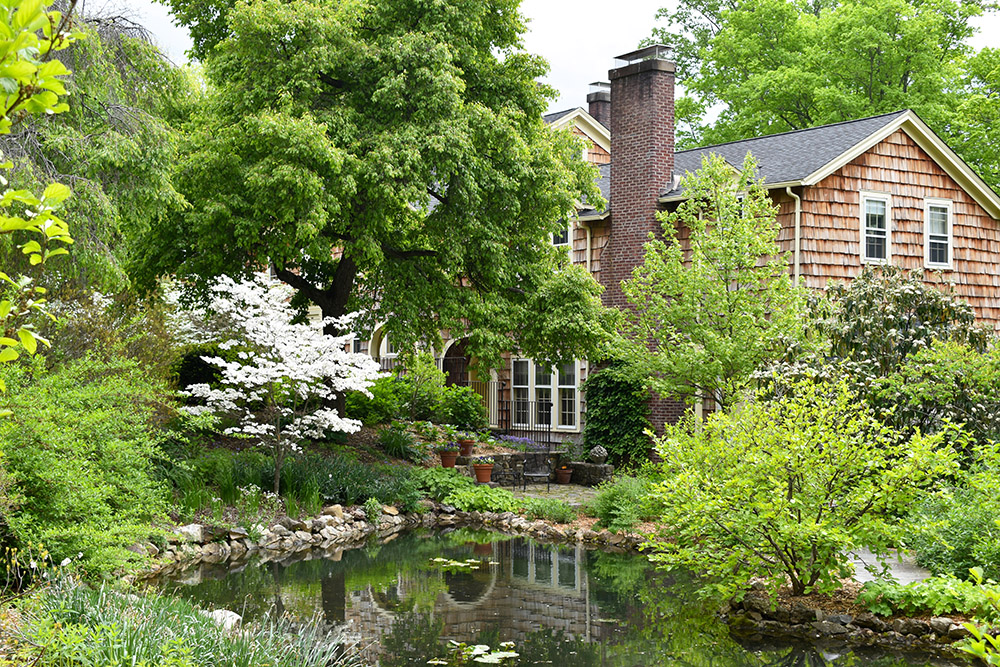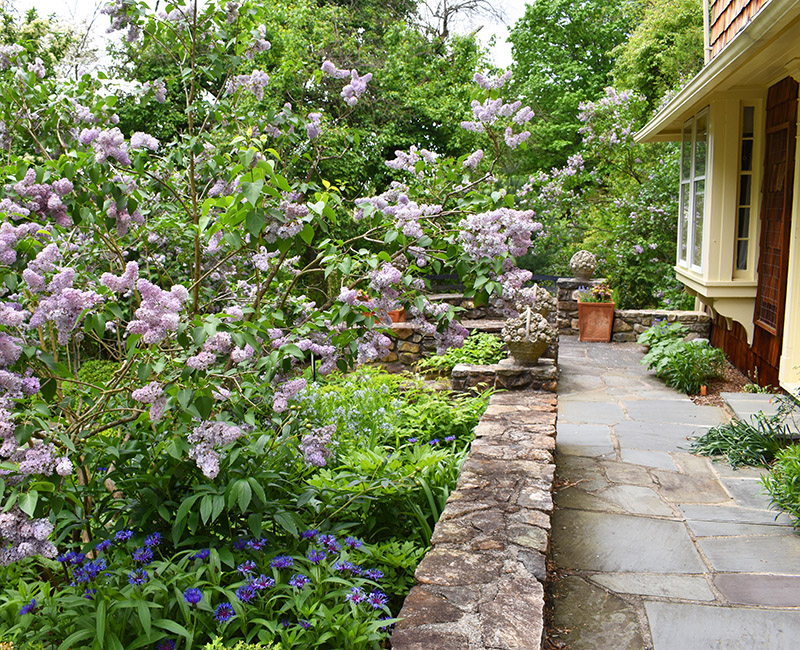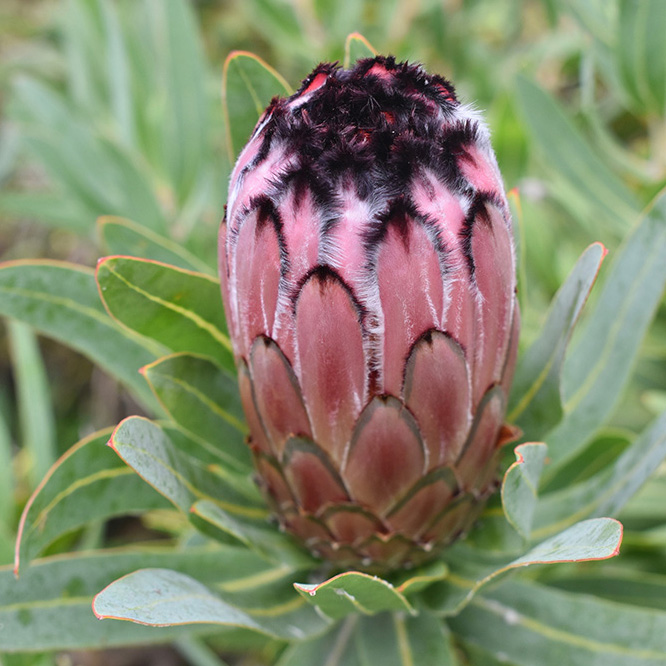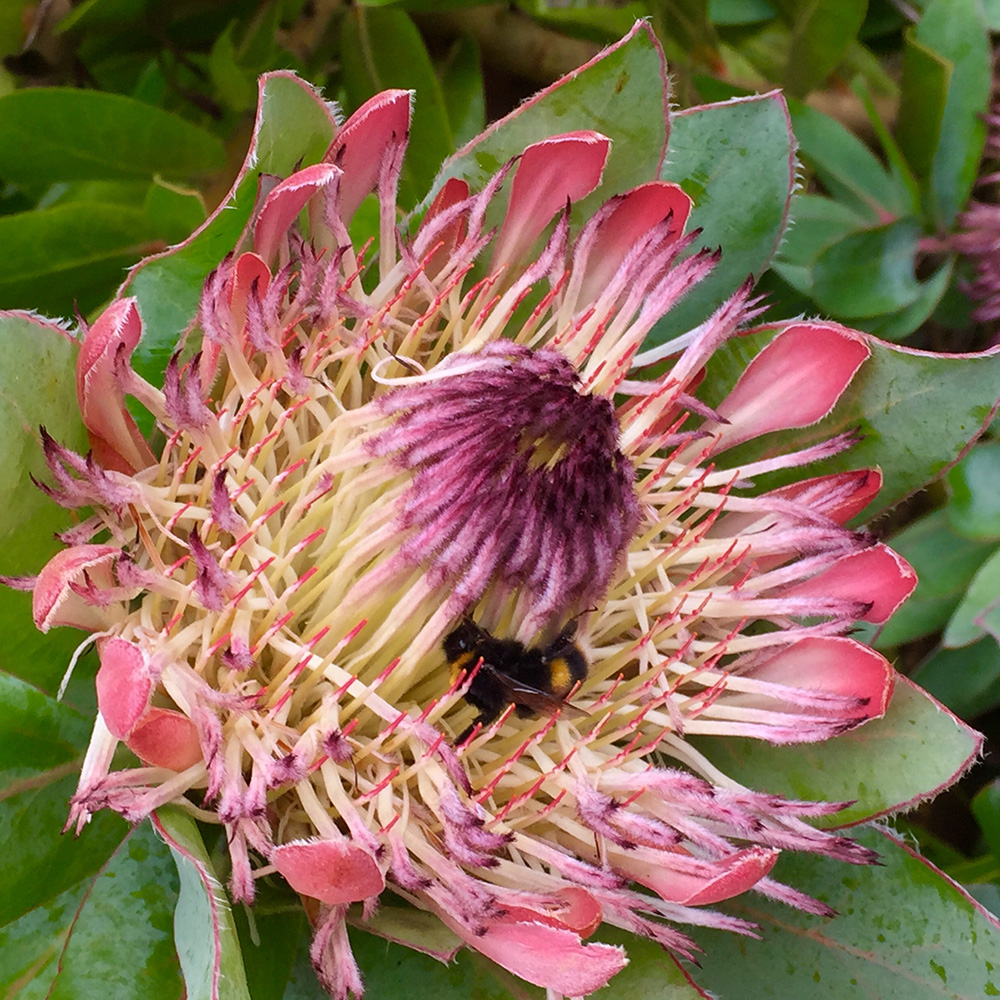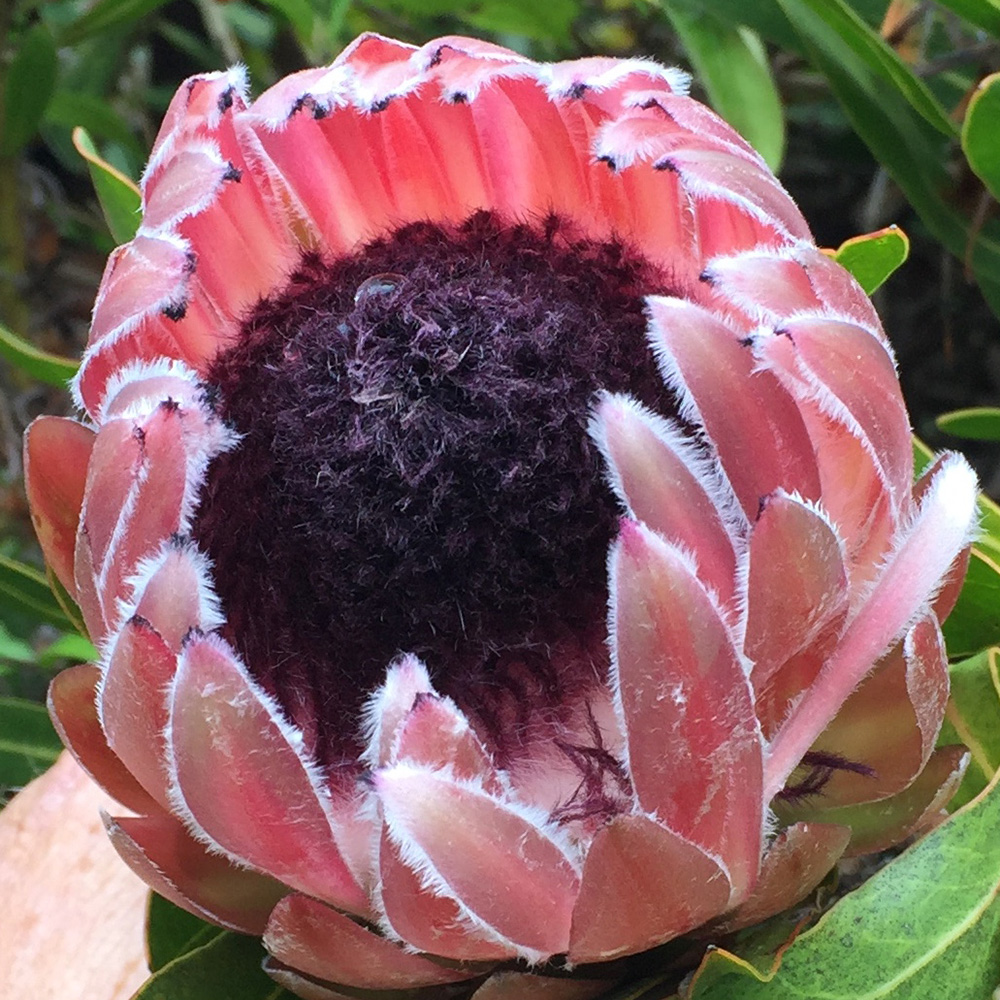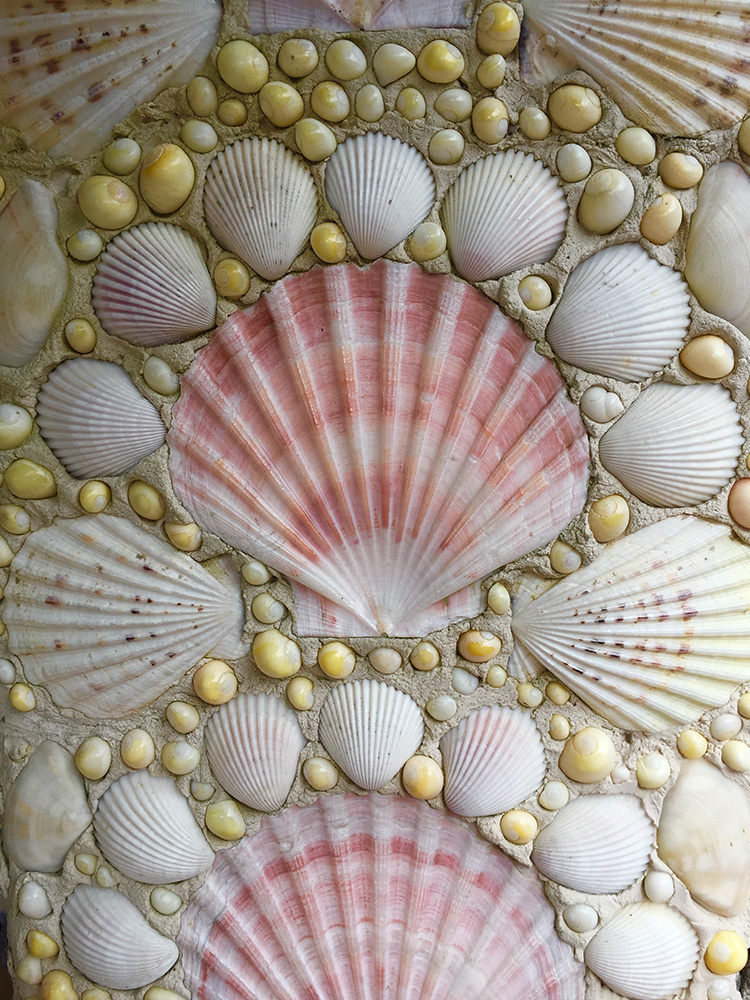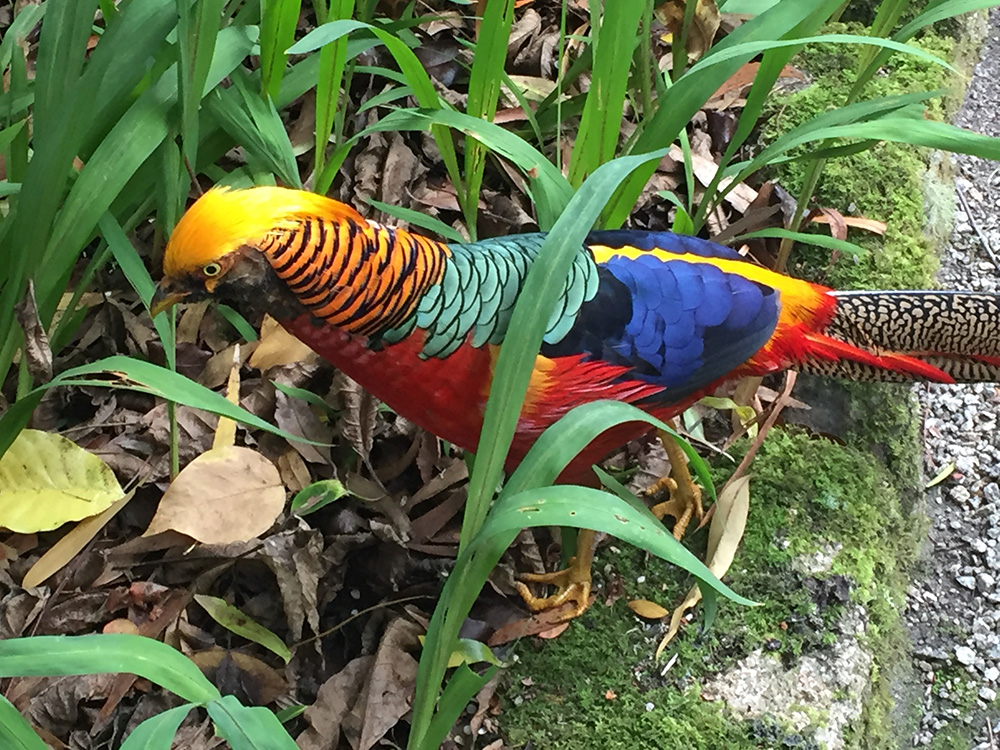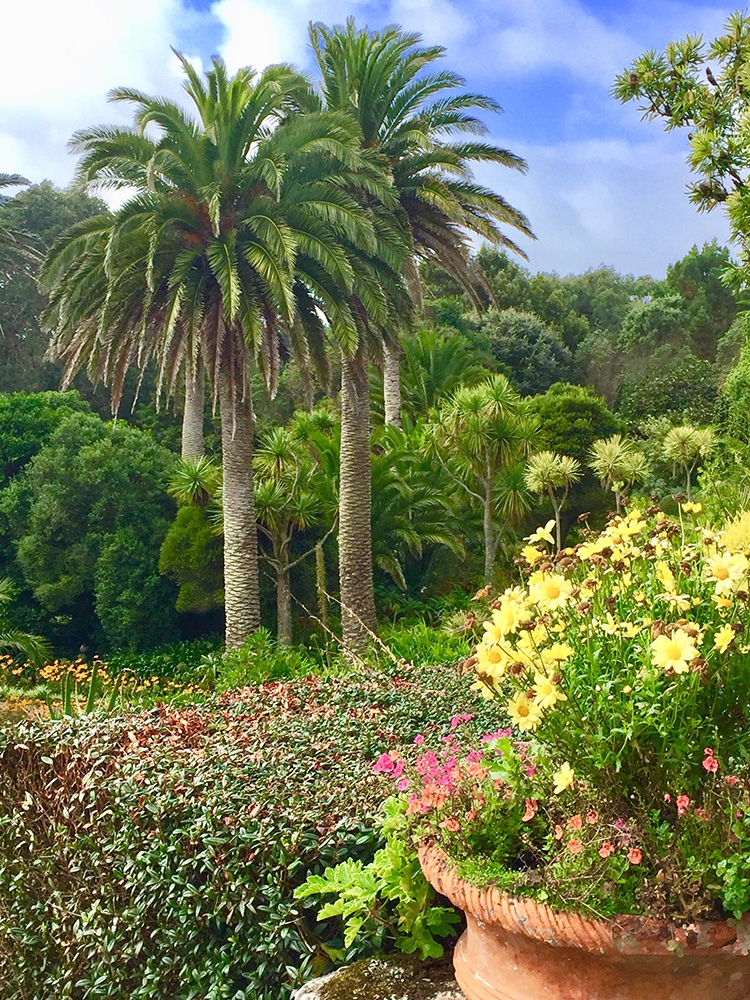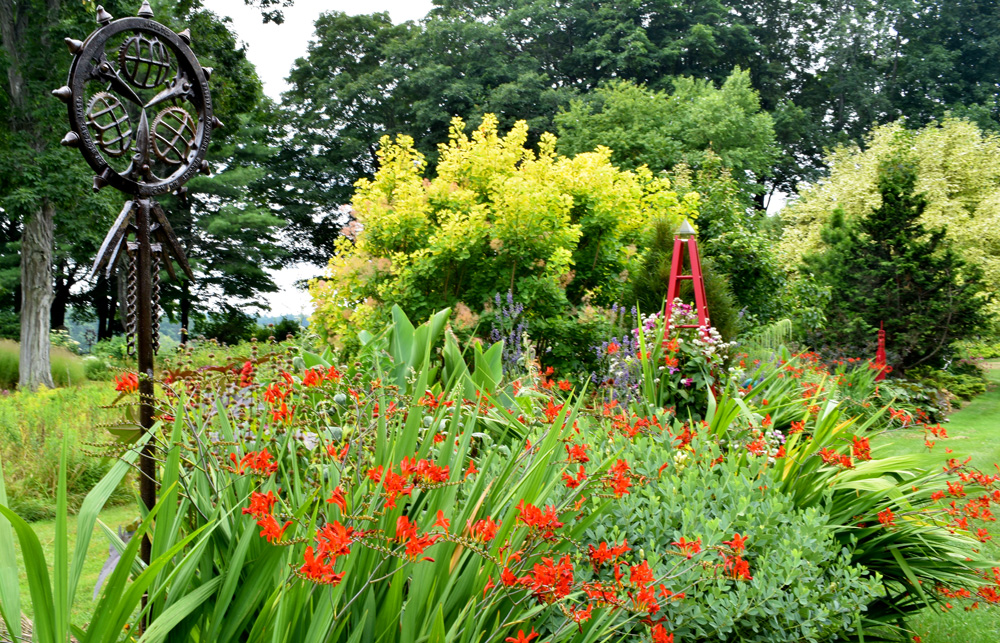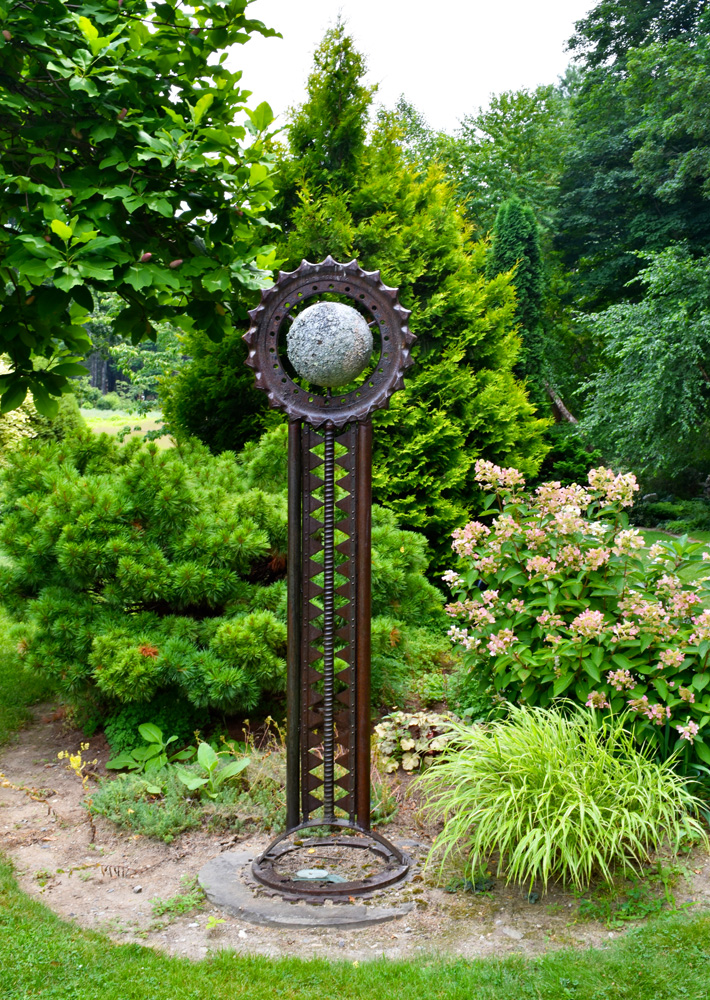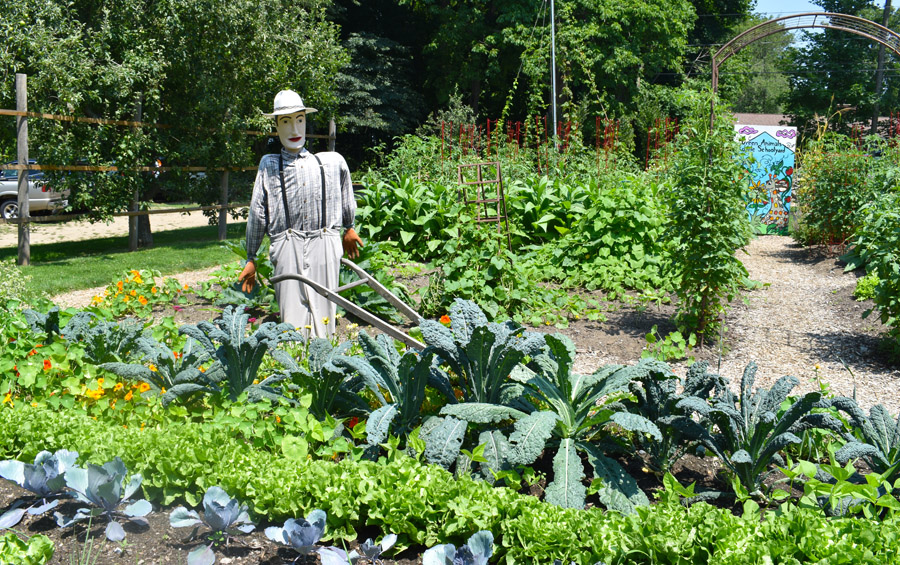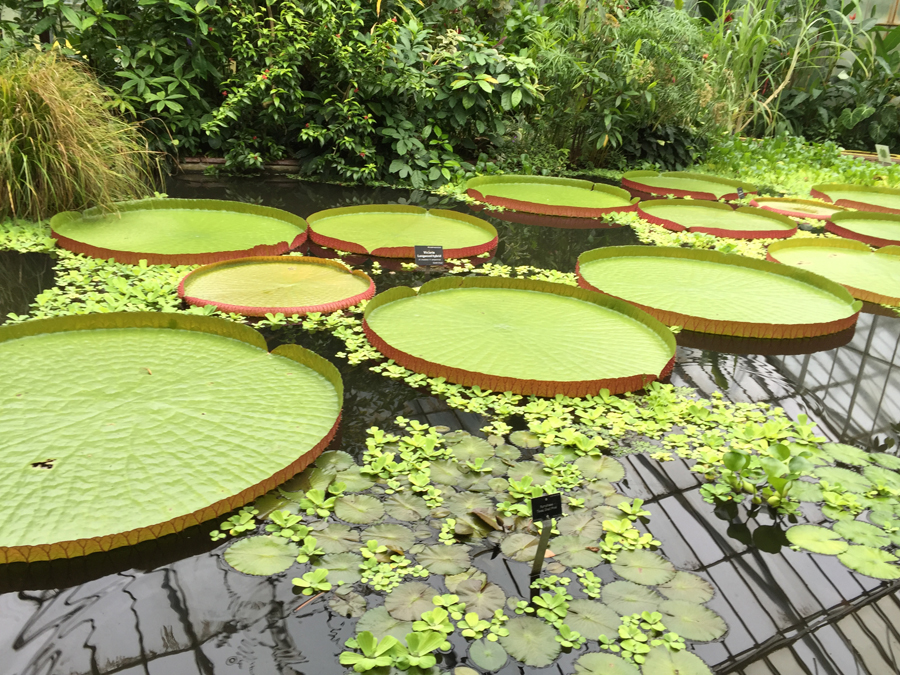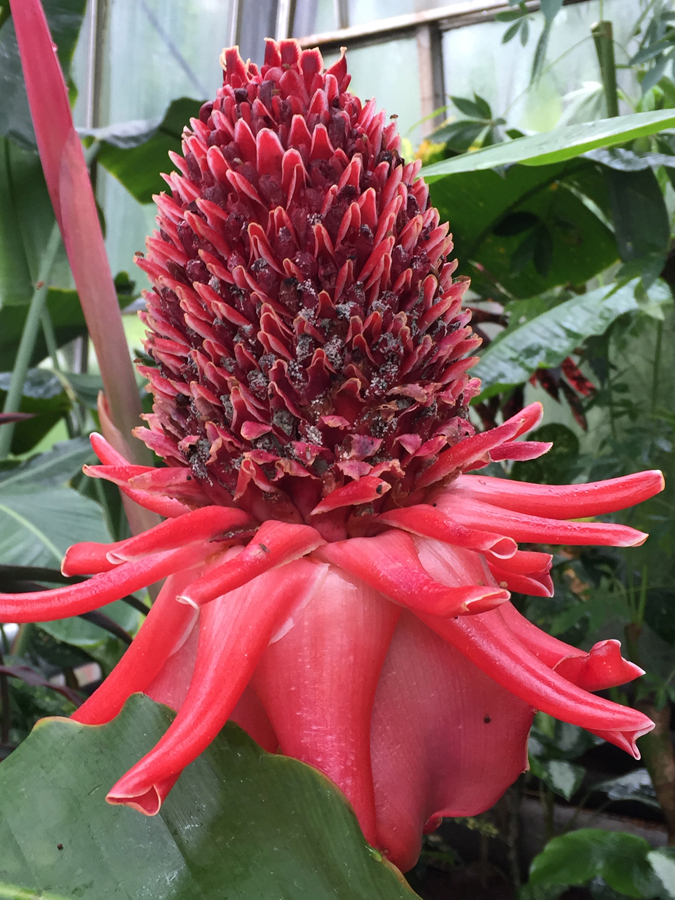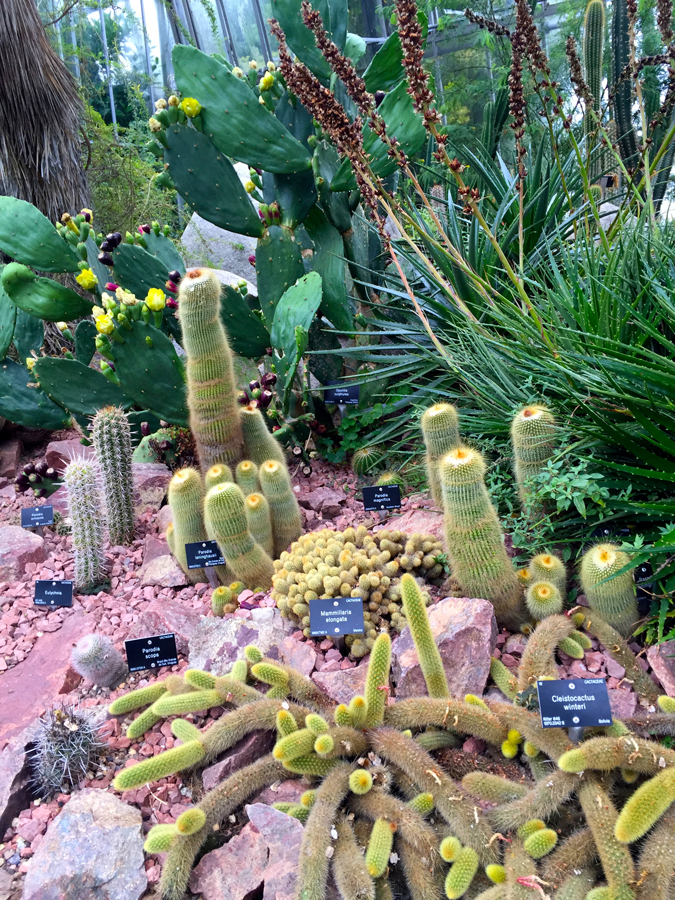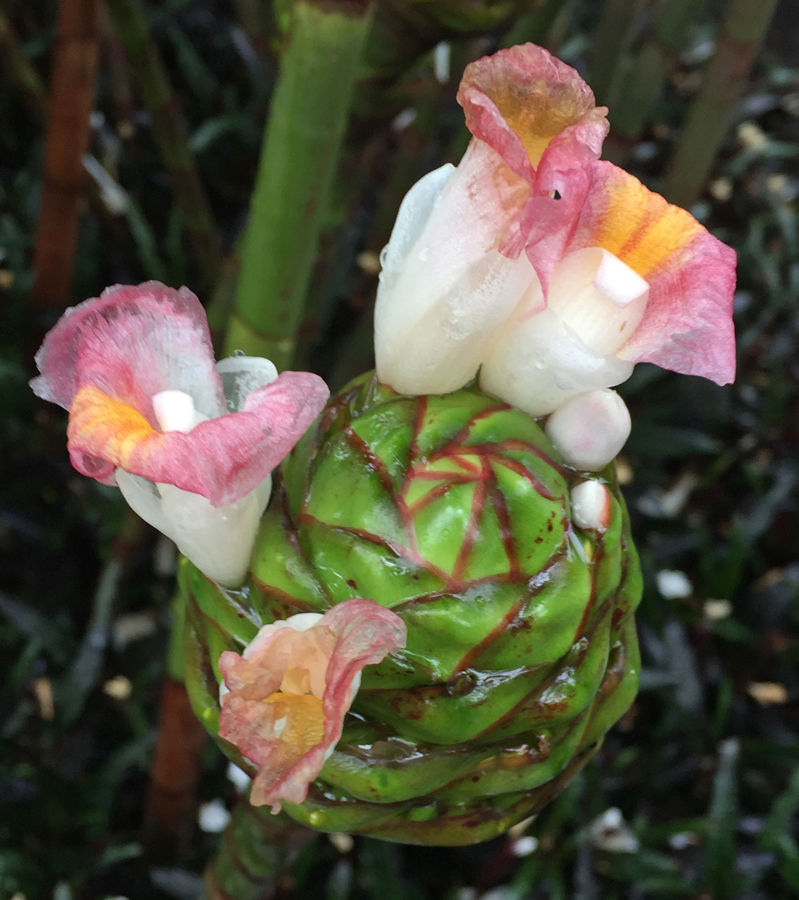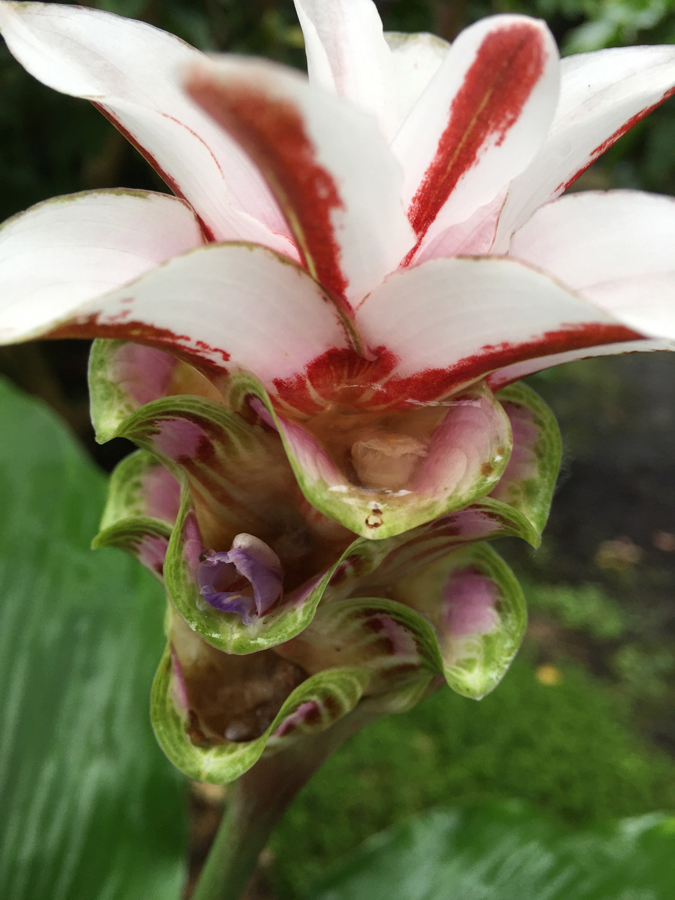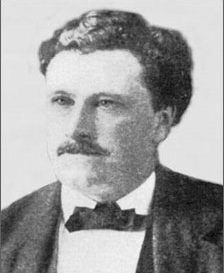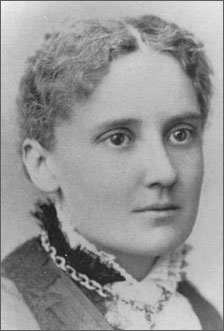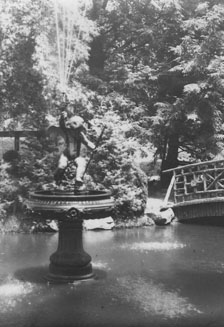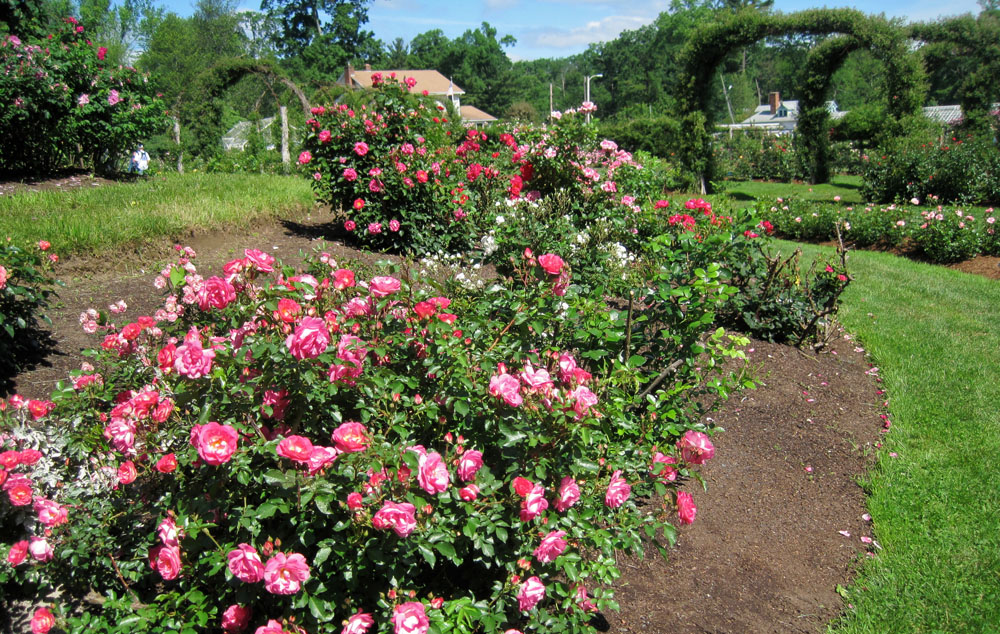Joie de Vivre in Joyce's Garden
/A bright red arbor made of a crossing shovel and a spading fork greets visitors at the entrance of Joyce Hannaford’s lush garden. Colorful flowers spill out across the road and create a cheerful welcome into this private cul-de-sac.
When Joyce and her husband, Charlie, moved into their 1923 gambrel Colonial 20 years ago, the house was barely visible behind overgrown shrubs and trees. Numerous towering pines had to be removed before any gardening could begin. Now, graceful Japanese maples, dappled willows, tricolor beeches, and specimens of Japanese umbrella pine, stewartia, and katsura allow hundreds of perennials to grow in their dappled shade.
Joyce’s garden began with a gift of 70 daylilies from a friend who was moving across the country. Since then, Joyce’s collection has grown to about 400 plants that provide peak color for the garden in mid-July. The daylilies bloom profusely with Shasta daisies, phlox, Rudbeckia, martagon and Oriental lilies, Echinacea, and colorful annuals. Sculptural ‘Tropicanna’ cannas add texture, pattern, vivid color, and tropical flair to the borders. An elegant weeping larch draping over a small pond welcomes you to a hidden oasis behind the house. There a large elliptical flagstone fountain provides the gentle sound of trickling water for an intimate brick patio and dining area surrounded by silver Japanese pines. Clumps of Hakone grass, Solomon’s seal, hostas, epimediums, and ferns create a colorful carpet of foliage.
Joyce, a former caterer and self-proclaimed “foodie,” designed the garden for entertaining during both the day and evening, with layers of uplights, fairy lights, and pathway lights that guide you through the garden. Sculptural bronze flowers illuminate the pathways, adding a magical glow to the garden after dark. A circular patio with a firepit is a favorite place for Joyce and Charlie to relax in the evening, sipping wine by the fire and chatting with passersby.
The garden is embellished with birdhouses, tuteurs, gazing globes, arbors, and mementos of friends and travels. The whimsical stacked-stone sculptures were created by friend Jim Chudy. A pair of Sicilian ceramic heads planted with sedums brings back memories of Italy. A pathway of flagstones from Joyce’s hometown of Franconia, New Hampshire, leads into a memorial garden dedicated to her best friend, Susan. For Joyce, the garden is an exuberant labor of love, a memory book of friends and adventures past, a palette for artistic expression, and a setting for delightful celebrations.
Some of Joyce’s favorite gardening tips:
Use compost to mulch flower beds
Cut back perennials such as phlox, perovskia, Montauk daisy, asters and sedums in June to keep them from flopping
Use lots of annuals in the garden for pops of color
Fertilize pots weekly. Joyce uses Neptune’s Harvest fish emulsion
I met Joyce and Charlie on a tour of gardens in the Scottish Highlands sponsored by the Natick Garden Club. Their friendliness, humor and passions for gardening, wine and good food made the trip really fun. Joyce’s Natick, Massachusetts garden is open on the fourth weekend in July from 10 am to 4 pm, and from June to Labor Day by appointment. Admission is $15. Please contact Joyce at joycesgardennatick@gmail.com.
Joyce’s Garden is one of 140 outstanding destinations in The Garden Tourist’s New England, available here.


